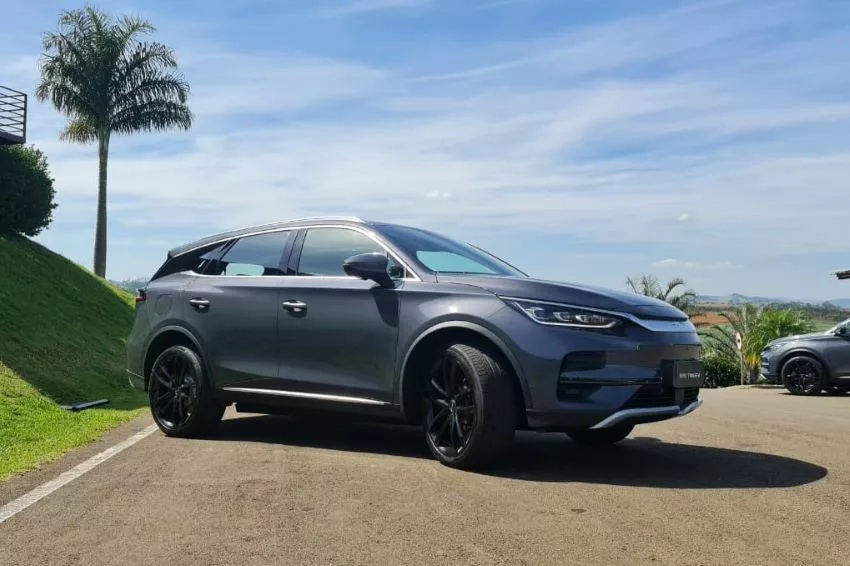In an era where sustainable mobility is no longer a futuristic concept but an immediate necessity, Tesla and BYD are emerging as frontrunners, pioneering innovations in EV battery technology. Did you know that by 2025, the global electric vehicle market is expected to reach USD 802.81 billion? As electric vehicles gain momentum, the demand for efficient, powerful, and affordable batteries becomes more critical than ever. In this article, we delve into how Tesla and BYD are leading the charge in EV battery innovation, transforming the way we think about electric mobility and sustainable living.
Tesla’s Battery Breakthroughs
1. Lithium-Iron Phosphate (LFP) Batteries
Tesla has been making waves with its strategic pivot to lithium-iron phosphate (LFP) batteries. Unlike traditional lithium-ion batteries, LFP batteries offer numerous advantages:
- Safety and Stability: LFP batteries are known for their thermal stability, reducing the risk of overheating.
- Longevity: They boast a longer life cycle, making them ideal for high-mileage vehicles.
- Cost-Effectiveness: With a reduced reliance on cobalt, LFP batteries are cheaper to produce.
This move has already manifested in Tesla’s Model 3 vehicles in China, which are equipped with LFP batteries. Reports from Electrek suggest that these batteries could soon become standard across Tesla’s global lineup, offering a more sustainable and cost-effective solution.
2. The 4680 Battery Cell
Tesla’s innovation doesn’t stop there. The introduction of the 4680 battery cell has been a game-changer. Revealed during Tesla’s Battery Day in 2020, this new cell design promises:
- Increased Energy Density: Up to five times more energy capacity than the 2170 cells.
- Enhanced Range: Vehicles could achieve a 16% increase in range.
- Reduced Production Costs: A 50% reduction in per kWh cost.
These advancements not only boost vehicle performance but also align with Tesla’s mission to make electric vehicles more accessible.
BYD’s Revolutionary Battery Solutions
1. Blade Battery Technology
BYD, a titan in the EV market, is revolutionizing battery safety and efficiency with its Blade Battery technology. The Blade Battery offers several standout features:
- Ultra-Safety: Unlike traditional batteries, it remains cool and intact even when penetrated, as demonstrated in the nail penetration tests.
- Efficiency: The thin, long shape of the battery cells allows for better space utilization, increasing the battery pack’s energy density.
- Longevity: Boasting a lifespan of over 1.2 million kilometers, the Blade Battery sets new standards for durability.
BYD has incorporated this technology into its Han EV model, which has been met with positive reviews for its range and safety features.
2. Battery-as-a-Service (BaaS) Model
In addition to hardware innovations, BYD is pioneering the Battery-as-a-Service (BaaS) model. This subscription-based service allows consumers to lease batteries separately from the vehicle, offering:
- Reduced Upfront Costs: Lower initial purchase price for vehicles.
- Flexible Upgrades: Easy access to the latest battery technology.
- Environmental Benefits: Encourages battery recycling and reuse.
This model not only makes EV ownership more affordable but also promotes sustainable practices in battery usage and disposal.
A Comparative Analysis: Tesla vs. BYD
When comparing Tesla and BYD, several factors come into play:
- Innovation Speed: Tesla’s rapid development of the 4680 cell showcases its agile innovation process.
- Safety and Sustainability: BYD’s Blade Battery leads in safety, while Tesla’s focus on LFP hints at a commitment to sustainability.
- Market Strategy: Tesla’s global reach contrasts with BYD’s strong presence in China and its growing international footprint.
Key Considerations for Buyers
If you’re considering purchasing an EV, here are a few tips to guide your decision:
- Battery Longevity: Look for vehicles equipped with batteries that offer long life cycles to maximize your investment.
- Safety Features: Prioritize models that incorporate advanced safety technologies, like the Blade Battery.
- Cost Efficiency: Consider the total cost of ownership, including potential savings from lower battery production costs.
- Eco-Friendliness: Choose brands that prioritize sustainable materials and recycling practices.
Conclusion: The Future of EV Battery Innovation
In the dynamic world of electric vehicles, Tesla and BYD are not just keeping pace—they’re setting it. Through groundbreaking battery technologies and innovative business models, they are reshaping how we perceive electric mobility. As these brands continue to push the envelope, the future looks promising for sustainable transportation.
Are you ready to join the electric revolution? Share your thoughts in the comments below, and stay tuned for more insights into the ever-evolving world of EVs. As we look ahead, it’s clear that the innovations of today will pave the way for a greener tomorrow. With Tesla and BYD at the helm, the journey towards sustainable mobility is not only a possibility but a rapidly approaching reality.

